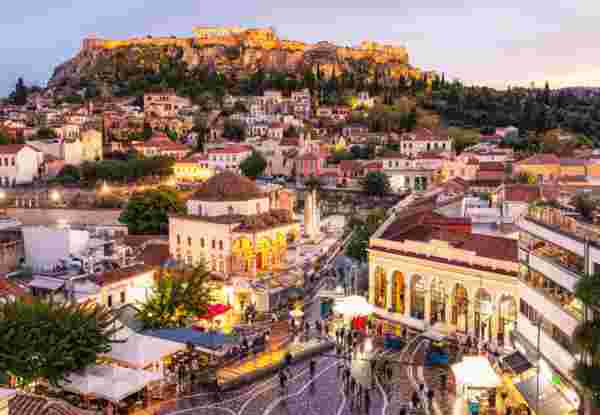Greek Easter Food and Traditions
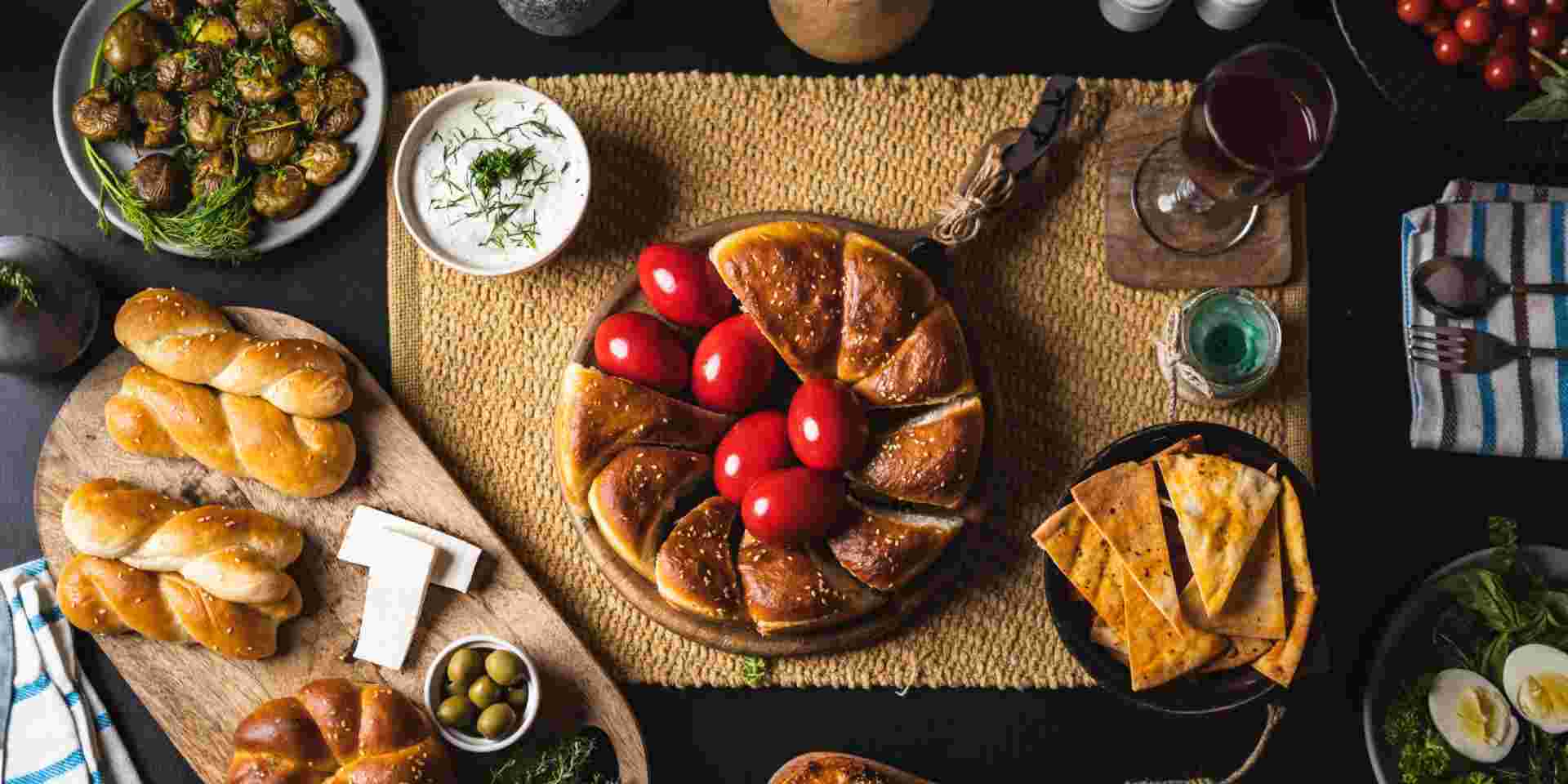
From the red eggs to the lamb and the mageiritsa, the Greek Easter Food and traditions go back hundreds, even thousands of years. Greek Easter is a key event in the Christian calendar. It brings deep religious practices and joyful celebrations. This time blends old customs with feelings of new beginnings. From the important ceremonies of Holy Week to the shared meals on Easter Sunday, Greek Orthodox Easter showcases a lovely mix of faith, culture, and delicious Greek Easter food.
What Greeks eat at Easter is very specific. Have you ever wondered why?

What Food is Eaten on Greek Easter
Greek Easter food highlights the country’s rich cooking traditions. There are many yummy dishes that show the celebration of this special time. After 40 days of Lent, a period of fasting and reflection, Greek families make large meals to celebrate. The traditional Easter table is full of tasty foods. Each dish shows the joy and abundance of this holiday. From meat dishes to sweet treats, Greek Easter foods capture every flavor of Greece.
Lentil Soup
It is the food of Good Friday, a mournful food. Not everyone fasts for 40 days, but on Good Friday, people must fast, and they traditionally consume “boiled” food with a lot of vinegar, with lentils being the most common dish. People add vinegar in remembrance of what Christ was given on the Cross instead of water. The lentils, according to tradition, symbolize the tears of the Virgin Mary.
Magiritsa Soup: Breaking the Fast
As the clock hits midnight on Easter Sunday, Greeks gather for a special tradition: eating Magiritsa soup. This special soup is important to Greek Easter traditions. It shows the end of the Lenten fast and the start of the joyful Easter feast. Its symbolism is hidden in the herbs that symbolize the bitter grass that the Jews ate in remembrance of their slavery by the Egyptians. Easter in Hebrew means “exit”. For Christians, Easter means the passage from death to life.
Magiritsa soup includes lamb offal and fresh herbs, especially dill. It gets its thickness from avgolemono, which is a traditional Greek sauce made from eggs and lemon. Preparing this soup requires time and attention. It simmers for several hours to mix the flavors nicely. Olive oil is important in Greek cooking. It gives the soup a rich and fruity flavor. Some people might be surprised by the ingredients in Magiritsa. This traditional soup shows the talent of Greek cooks. They use every part of the lamb to make a dish that is rich in flavor and history.
Lamb on the Spit: The Centerpiece of Easter Sunday
No Greek Easter meal is complete without lamb on the spit. This custom turns the Easter dinner into a big party for everyone. It usually takes place in backyards or village squares. The smell of roasting lamb fills the air, drawing people in to share the fun. The lamb is seasoned with care. It has salt, pepper, oregano, and a good amount of olive oil. It cooks slowly over an open fire. This allows the flavors to blend into the meat, making it tasty. Slow cooking makes the lamb very soft, with a crispy outside. As the lamb cooks, it shows togetherness. It brings family and friends together to celebrate Easter Sunday.
Kokoretsi
For anyone who wants a delicious experience during Greek Easter, Kokoretsi is a must-try. This unique dish from Greece is made with lamb organs, like intestines, liver, and lungs. It gets its flavor from herbs and spices and is wrapped in a special fat. Making Kokoretsi requires skill. First, you clean the offal and soak it in a mix of lemon juice, olive oil, oregano, and other spices. Then, you put it onto skewers and wrap it in caul fat. This helps keep the offal safe and gives the outside a crispy feel when cooked. Kokoretsi is often grilled over charcoal, which adds a smoky taste that makes it more tasty.
Spanakopita: Spinach Pie
Spanakopita is a traditional Greek dish often served on Easter. It is a tasty choice that is full of flavor. This pie shows off the fresh greens of spring, especially spinach, which stands for new life. The key to a tasty Spanakopita is its layers of crispy and flaky phyllo dough. You brush these thin sheets with olive oil and stack them in a baking pan. This makes a great base for the filling. The filling has sautéed spinach, crumbled feta cheese for a tangy and salty flavor, mixed herbs, and a hint of nutmeg. Spanakopita can be enjoyed as a warm snack or a light main dish. Its mix of textures and flavors shows the simple and tasty side of Greek food.
Greek Lemon Potatoes
Greek Lemon Potatoes, also known as Patates Lemonates, are a great side dish for roast lamb. They have a tangy taste and smell that match well with the meal. These potatoes are crispy on the outside and soft on the inside. They are packed with bright flavors from lemon and oregano. To make the potatoes crispy, first, parboil them. After that, roast the potatoes in a lot of olive oil. Mix lemon juice, olive oil, oregano, salt, and pepper. This mix coats the parboiled potatoes well. It will help them get a nice golden brown crust. While the potatoes roast, the lemon juice gives a tangy flavor. This balances the rich taste of the olive oil. Oregano adds its earthy aroma. Together, they create a delicious side dish that highlights the fresh and simple flavors of Greek cooking.
Greek Tzatziki Dip
No Greek feast is done without Tzatziki. This tasty yogurt dip cools down the strong flavors of the meal. Tzatziki is made with thick Greek yogurt. It gets its strong taste from grated cucumber and garlic. Before mixing, the cucumbers are salted and drained. This step takes out extra water and makes the dip taste better. A good amount of olive oil and fresh dill is added to improve the taste, giving it a richer and herbal flavor. For the best taste, chill the Tzatziki before serving. This way, the flavors mix and create a refreshing dip.

Experience Greek Easter Traditions First-Hand
Greek Easter Desserts
The sweet part of Greek Easter food is its traditional desserts. These treats bring joy and fun to the holiday. There are braided breads and light pastries that make a delicious ending to the meal. As they bake, the kitchen fills with the smell of cinnamon, cloves, and orange. This shows that weeks of cooking are finished and a happy time is starting. Each dessert has a special meaning. They have their own shapes and traditional ingredients that reflect the spirit of Easter.
Koulourakia: Butter Cookies
Koulourakia are classic Greek butter cookies. They are a favorite on Easter tables in Greece. Their golden brown color and sweet taste symbolize the joy of the holiday. These rich and crumbly cookies have hints of vanilla or citrus zest. They fill the air with a delightful scent during Easter. The main ingredients are butter, sugar, eggs, and flour. Koulourakia feel soft and melt-in-your-mouth because of baking ammonia, a common leavening agent. They are shaped into braids or S shapes. Then, they are brushed with egg wash and sprinkled with sesame seeds. The sesame seeds add a nice nutty crunch in each bite.
Tsoureki: The Traditional Greek Easter Bread
An integral part of the Christian tradition, the bread symbolizes the Body of Christ, which he distributed to his disciples at the Last Supper. Each place enriches and varies the recipe for making bread according to its traditions, ensuring that bread is always part of our religious celebrations. Tsoureki is perhaps the most popular festive variation of bread. People also know it as “Lambri bun” and derived its name from the Turkish word “corek,” which characterizes any dough containing yeast. Yeast gives life to the flour and makes it bread. The bun refers to the Resurrection of Christ, to life. People make it in various shapes, with the braid being more widespread, which, during the period of paganism, removed evil spirits. A red egg somewhere in the center of the bread-bun is also a common decoration.
Galaktoboureko
Galaktoboureko is a tasty Greek dessert that delights your taste buds. It has a soft custard center wrapped in layers of crispy, golden-brown phyllo pastry. This classic treat blends different textures and flavors. Many people enjoy it for special occasions. The main part of Galaktoboureko is its creamy custard, which has a taste of lemon zest and vanilla. Semolina flour makes the custard thick, giving it a rich feel that melts in your mouth. After baking, Galaktoboureko soaks in a sweet syrup. The pastry gains extra flavor from this syrup, which people often make with lemon, orange, or honey for a fresh taste.
Baklava
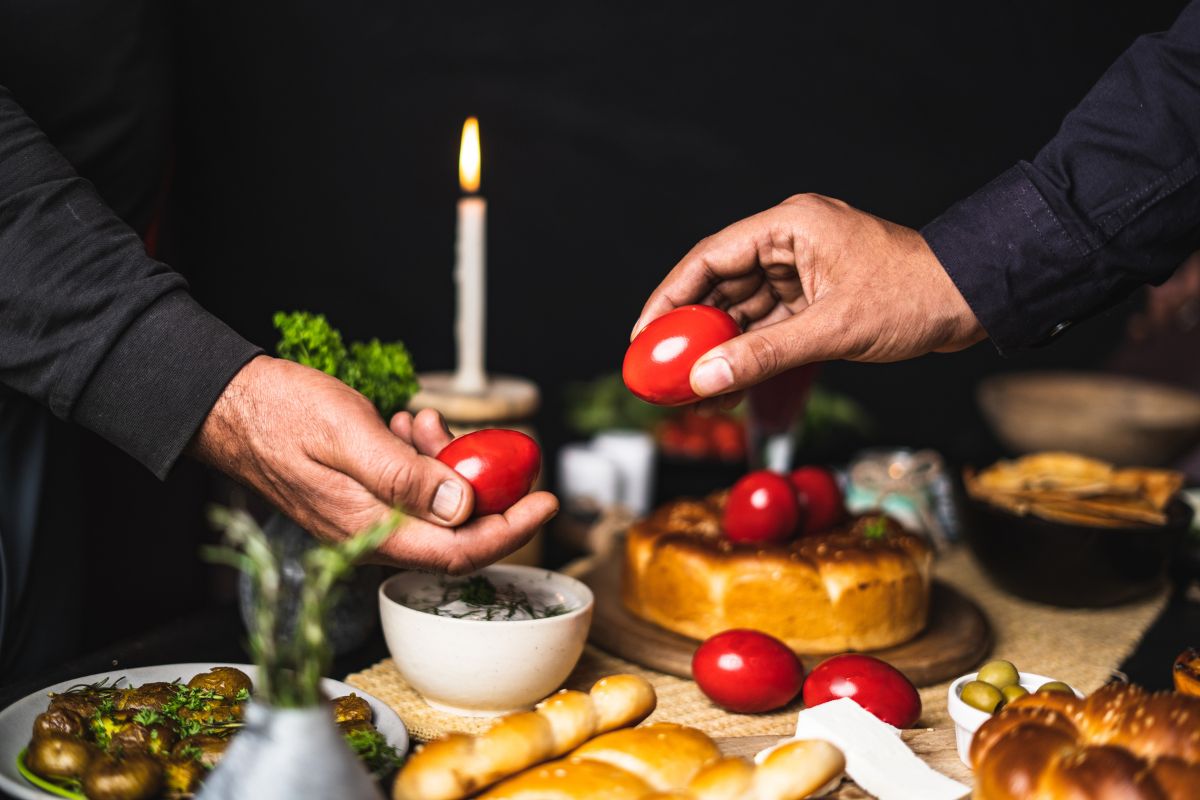
Greek Easter Food Traditions
Greek Easter is not only about good food. It has long traditions that show new beginnings and life winning over death. These customs, shared for many years, add meaning to the Easter celebration. Greek Easter traditions highlight both the serious moments of Holy Week and the joyful times on Easter Sunday. They show us the important aspects of Greek culture and faith. These customs remind us how vital family, belief, and hope are during Easter.
The Significance of Red Easter Eggs
Red Easter eggs are very important in Greek Easter customs. They represent new life and hope. The bright red color symbolizes the blood of Christ, given for the salvation of people. People also regard the egg as the tomb where Christ came back to life. For many years, people have dyed eggs red. This activity often brings families together. Different generations join in this special event. People usually dye the eggs on Holy Thursday. This day remembers the Last Supper.nThese red eggs are not just symbols; they play an important role in Easter celebrations. At midnight on Easter Sunday, people crack them open. This marks the moment when Christ came back to life. Family and friends share the eggs. This sharing shows the joy of his sacrifice and the happiness of his return.
How to Dye Greek Easter Eggs with Food Coloring
Dyeing Easter eggs is a fun activity for families at Easter. Many people use natural dyes like beetroot or onion skins. Food coloring is also a bright and simple option.
To color Greek Easter eggs with food dye, you will need:
- Hard-boiled Eggs
- White vinegar
- Food coloring (red is the usual color)
- Cups or bowls for dyeing
Instructions:
- First, put about a cup of warm water into each bowl or cup.
- Next, add 1 tablespoon of white vinegar to each bowl.
- After that, add drops of food coloring to each bowl until you reach the color you want.
- Then, gently dip the hard-boiled eggs into the dye. Let them sit for a few minutes. The longer you leave them, the darker the color will get.
When the eggs have the color you like, take them out of the dye and let them dry completely.
The Importance of Lamb in Greek Easter
The protagonist at the table is the lamb in countless religious stories of Christianity. Nonetheless, it symbolizes the supreme sacrifice, the sacrifice of Jesus Christ, who as the “Lamb of God” bore the sins of the world. Lamb plays a big role in many cultures, especially during the Greek Easter feast. It shows the sacrifice of Christ and the joy of his rising from the dead. Eating lamb helps us feel connected to the Lamb of God and celebrates hope for life forever.
Greek Easter is a time for traditions and good food that bring families together. Want to spend Greek Easter on the Greek Islands to enjoy all the Greek Easter traditions? There is the rich Magiritsa soup and tender lamb cooked on the spit. Each dish tells a story of culture and celebration. The sweet smells of Tsoureki and Galaktoboureko fill the air. The bright red Easter eggs stand for new beginnings. When you sit around the table with your loved ones, enjoying every bite of Spanakopita and Baklava, remember that Greek Easter food is more than just delicious dishes. It represents the memories and customs we pass down. Enjoy the feeling of togetherness and joy that this special season brings. Kaló Páscha!
Feeling Ready?
From our blog
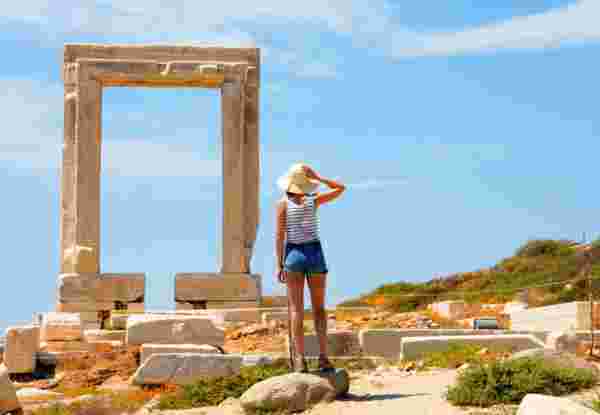
Honeymoon in Naxos: A Complete Guide
READ MORE
Visiting Athens with Kids: A helpful Guide
READ MORE
Paros for Seniors: Tips and Itinerary
READ MORE
Best Resorts in Greece for Families: Your Ultimate 2025 Guide
READ MORE
How to Enjoy Santorini for Seniors
READ MORE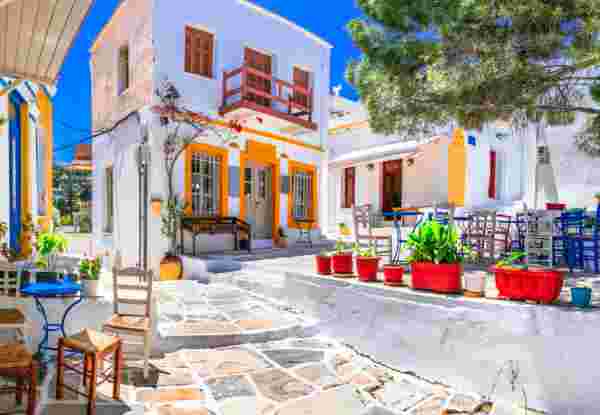
Honeymoon in Paros Island
READ MORE
Rome Travel Guide: What to Do, When to go and Where to Go
READ MORE
The Best Greek Islands for Couples, According to a Luxury DMC
READ MORE
Discover Milan: Top Attractions
READ MORE